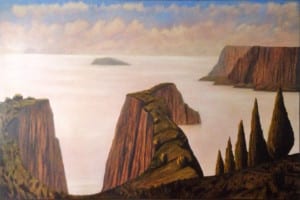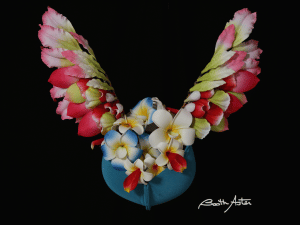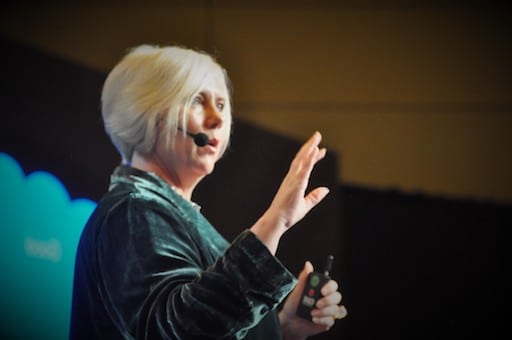It began with a problem. Or as the Chinese would say, an opportunity.
Read on for the behind the scenes story, for the bullets, see the end.
Behind the scenes
It’s Thursday, 7:10pm and I receive an email. ‘We would like to invite you to be the TEDxAIR for TEDxPickering St at the Art Sciences Museum in Singapore.’
It’s in 8 weeks.
Side note: What’s a TEDxAIR? TED stands for Technology, Engineering and Design. The design side got a bit lost so 3 years ago the first Artist-in-Residence or AIR was created to link to the creative communities and to see how ideas are expressed in other mediums. Each TEDxAIR is unique. Todate there have been around 18 ranging from Mt Hood USA to the Courtauld Institute UK and now the PickeringSt at the Art Sciences Museum in Singapore.
In between saying ‘Oh, Yeh! Oh Fxxk! Oh, Yeh! Oh Fxxk!’ to myself, I read on. I am asked to create artwork and installations to inspire attendees at the TEDx event. The theme is ‘Quotients’ – as in intelligence quotient IQ or EQ the emotional intelligence quotient. They asked ‘What other important quotients are there?’
As an artist, I’m complimented. But 8 weeks is an extremely short time to do commissioned work. Understanding the essence of their need, developing the artistic concept, agreeing this, validating that it’s executable (do able), actually doing it and installing it is something that usually takes months even years.
And I’m due in Oxford the next week for a think tank. I don’t have 8 weeks!
We meet the next morning, the TEDx convener, Ri and I.
Our first conversation: We decide go for it. We know we have just met, we don’t know each other, we don’t know the budget. It turned out the previous artist who had to pull out had funding, but it attached to him.
In situations like this, it’s either step up for the ride and trust that we’ll do something amazing or run for the hills.
We decided we’d trust that we could work it out.
Delivering the promise
Over the next 8 weeks, we had to live this ‘trusting it will work out’.
Side notes: What does trusting it will work out actually look like? It’s not naivety. Lots went wrong if I used corporate standards of practice. Well, you could call it failures in that there were many hiccups. Or you could say ‘we failed forward’. Or you could see this as the real story of the creativity and innovation process. One that actually delivers.
The creative process used here is the same one I use with large companies doing white space transformation. There are more parallels between the creative process for art and for successfully executing on business transformation than is generally realized. Using an inappropriate program process is a significant contributor to the 93% failure rate seen in corporates.
We do our first site visit. The space is huge and tiny. Both at the same time. The stage art installation is in a specific location, we’ve 4m by 2.4 m to work with. The foyer is 40 meters by 5 stories. It’s huge.
I put a concept forward, then I’m off to Oxford.
I get back and do another site visit to confirm sizes and spaces.
It’s 6 weeks out, a 3rd site visit. The head videographer (he who record the fabulous TED talks) doesn’t like the initial concept. Nor does he like its color.
Back to the drawing board.
At 3 am, I’m dealing with ‘what is the purpose of the artist?’ inner question and realize, ‘the concept, it’s the butterfly of Chaos Theory.’ You recall the one that flaps their wings over the Amazon and creates huge changes else where in the world?
TED is about ‘ideas worth sharing’. As the artist in residence, I wanted to express this in the art installation that acts as the stage backdrop.
Ideas worth sharing are butterflies that change the world
The concept is refined over caffeine the next day with Ri in our second critical conversation.
We’ll use parchment paper for the translucency. Ideas are intangible. Concept of wings flying to link to sharing. Later on we added a second layer, the gestation of ideas, like a caterpillar that eats, cocoons then morphs into the butterfly.
As this develops, one layer would be modern western pop art inspired by Roy Lichtenstein, the second, we’d use the Cutout and Shadow Technique inspired by traditional Asian paper cuts from China and the Indonesian paper shadow puppets. This is fitting for Pickering St. This TEDx is named after the first officer in the British Colonial Service who spoke both English and Chinese.
We’d laser cut the story of ideas to be modern. Given the scale which when we finally calculated what it would take 800 cm of paper, folded like a curtain, there was no way we could do it by hand. The laser cutting of the pattern would create the texture so the story would be visible. Backlight for depth.
The final concept: Ideas are Butterflies, it’s 4 meters x 2.35 meters, made from paper, space and light.
This is about as intangible and ephemeral as you could get.
Perfect.
The video guys oked the demo version.
Side Bar: In the creative white space of exploration and development, insights comes from unexpected quarters. Even feelings are all important elements that create a powerful concept that can be validated. Ideas develop into the vision, the thing that we say ‘this is the thing we are going for’. There is a distinct yet intangible sense ‘ah, this is it!’
Moving into the next stage of creativity is the actual execution on the core elements of the vision. Note, in the first stage, ‘how’ is not a big element, it was simply a validation point thanks to the timeline. It was not a constraint.
Into the next hurdle
In parallel, I’m also creating a TED talk. Actually, it feels like the TED talk – they ask if you had one idea to share, the idea of a lifetime, what would it be? Which feels pretty high stakes for me. Then it is finding the courage to share what really feels important. In real life, there is always more than one thing going on.
Back to art in action. This is strategy in action. Art is a concept delivered. Art is strategy executed.
Sidebar: This is a big challenge that a lot of companies face. The great idea may exist but executing those ideas is a problem. That’s why so many million dollar ideas don’t see the light of day. Sound familiar? Underneath this, we used a structured process to hone the most appropriate idea for our goal, and then a second structured process that integrates artistic creativity with program management to deliver results.
How do we actually convert the concept into reality?
It is only impossible until you do it
We, by this stage, Ri is firmly part of the creative team, we put a call for help out as more detailed work on the concept continues. Art is a team process.
The concept is sketched and tested – about version 8 or was it 15? – it feels right.
I spend 12 hrs hand folding paper to experiment to see which technique works best.
Lasers, at the scale we need, are huge and expensive. It turns out the one that could have done it, has been decommissioned.
The guys at the Fab Café at the Art Sciences Museum test out part of the concept so we know how it will behave when we laser.
The files we need to instruct the laser are infinitely more complex than we’d thought. There is no spray can dot creating tool in AI. Every dot is by hand. On an 8 meter file.
One graphic designer collapses working till 3:20 am.
We are now 3 weeks out.
Ri is discovering skills she didn’t know she had. We break files limits, we work around things. We adjust files so that the layers cooperate together.
We are now 2 weeks out.
We find a laser. The guy is wonderful. ‘Come in with the file. I’ll cut. I need it in dmx format.’
What’s dmx? We discover. We also find out that converting our file to this does stuff. More fixing (failure = recover in action).
It’s a week out.
The laser dude, he’s never cut paper. He’s on the adventure too.
Lasers are hot. Paper burns. He’s doing it layer by layer.
We have 10 different panels to burn. We need a spare in case one tears. 20 panels. It is 3 days out.
I get the call saying ‘don’t worry, it will be fine’
It’s all be so crazy, I actually do. Not worry, this is.
Friday am it’s ready to be picked up. The event starts Saturday at 12 noon.
The sheets are 2.4 meters long and 80 cm wide. I’ve got to work out how to carry them.
It’s raining. Parchment and rain is not a good look.
We were meant to be doing set up Friday am. Someone else is using the space Friday. We can’t start till 7pm.
I get there with everything I’ll need – I’ve this artwork ‘Ideas are Butterflies’, plus ‘Gaia’s Wings’, an 8m by 4.5 m installation for the foyer and another 6 pieces for the installation at the entrance of the Art Sciences Museum. It’s 9 pm.
My security pass is only valid from midnight.
I get in, there are some amazing volunteers who help put together the parchment. We lay out the pieces – there are 10 sheets of parchment, 80 cm x 2.4 m each. We have to work out which fits with which. It’s an 8 meter across puzzle.
Carefully we connect the 10 panels. Thank God the room next to the stage is huge.
Even more carefully, we fold the huge fragile artwork so it’s like a curtain.
We create loops so it can hang.
We get it on the rod, and carefully, carefully carry it to the next room, to the stage to hang it. To tweak the folds so it really looks like a curtain. I finally leave at 4:30 am Saturday.
A few hours later, at 10:30 am in the morning when I get back in, the lights appear, thanks to the video guys… we light up… it’s a sunrising light with the caterpillar of an idea being born as a butterfly.
It’s noon. TEDx begins. Ideas worth sharing.
Take Aways from Doing the Impossible aka TEDxAIR in 8 weeks
- Create Magic. You can create magic and the insanely impossible if you believe you can.
- Trust in each other. This can exist even if you haven’t ever worked together before. We trusted that each of us were doing our best. We knew we were not perfect and that we were on new territory. Conversation was critical to our success.
- Disciplined Creativity for Delivery. Underneath this story is a structured creative process integrated with the discipline of adaptive project management.
- Continuous prototyping. We validated continuously. This took time and resources. There was wastage – which was required as we didn’t have time for ‘do agains’
- Future Focused. Things went ‘wrong’ all the time. The closer it got to the date, this moved from once a week, to every day. At times it felt on the hour. To succeed in this type of environment, we had to live from trust. Practically this meant that each time things went off, we’d both go ‘ok, back to the big picture, so how?’ We were solution finding, future focused. At no time were we blame or past focused.
- Collective leadership. I lead the creative vision, Ri was instrumental in the execution. It’s a team effort, we each added different parts. At least 13 people contributed to this. Some of whom I didn’t even see, but they are there and are appreciated.
- Challenge is Stretch. Creativity and innovation will get No’s. The video guys were still unsure of the final work when they started doing recording tests at 11:30am. They wanted to take it down. But they kept it up for my TED talk as the first speaker. Then they left it till the break, and finally the whole event. They’d found that the art did work for them.
If they hadn’t said no initially, I’d not have stretched the creativity. Ideas would not be butterflies that change the world. Their challenge added hugely. They stretched me as an artist. And yes, they got stretched too. We both expanded.
If you are having challenges with creativity, time frames or getting results, it is an issue with the creative process-in-action.
Scale it: do you need ideas to deliver? Is your time frame short? Establish what each week gained would mean to your clients, organization and staff.
For example: a concept that is potentially $2.5 million per year in 2 years is worth $48,000 a week. $25 million pa is $480,000/week. Your measurement may be people helped as an NGO. In both cases, the more swiftly and brilliantly the idea becomes come real, the more valuable it is.
Getting creativity right is more that reducing risk and preventing loss, it is about making the impact and getting the results you really want.
Put these 7 points into action. You will see creativity, innovation and leadership delivering at a higher level. You will see results.
If creativity, time frames, strategy or results are high on your list of priorities, connect with me for an exploratory conversation on the situation, to give you initial insights and see if we both are a fit for each other.
Project Wings Pte Ltd (c) 2017
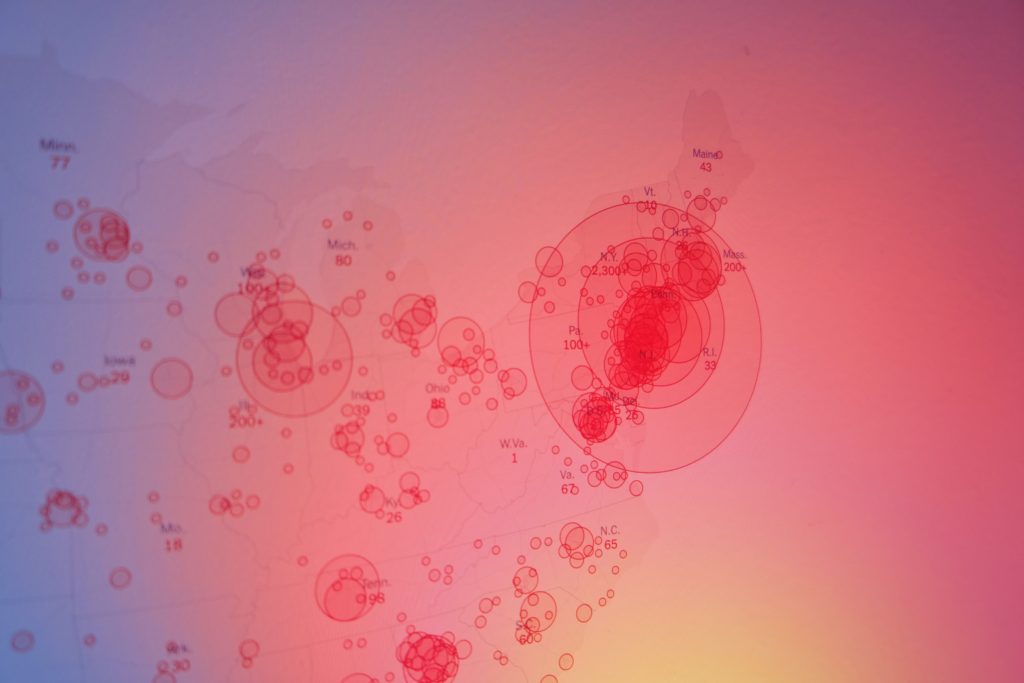
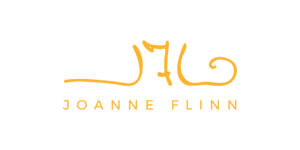
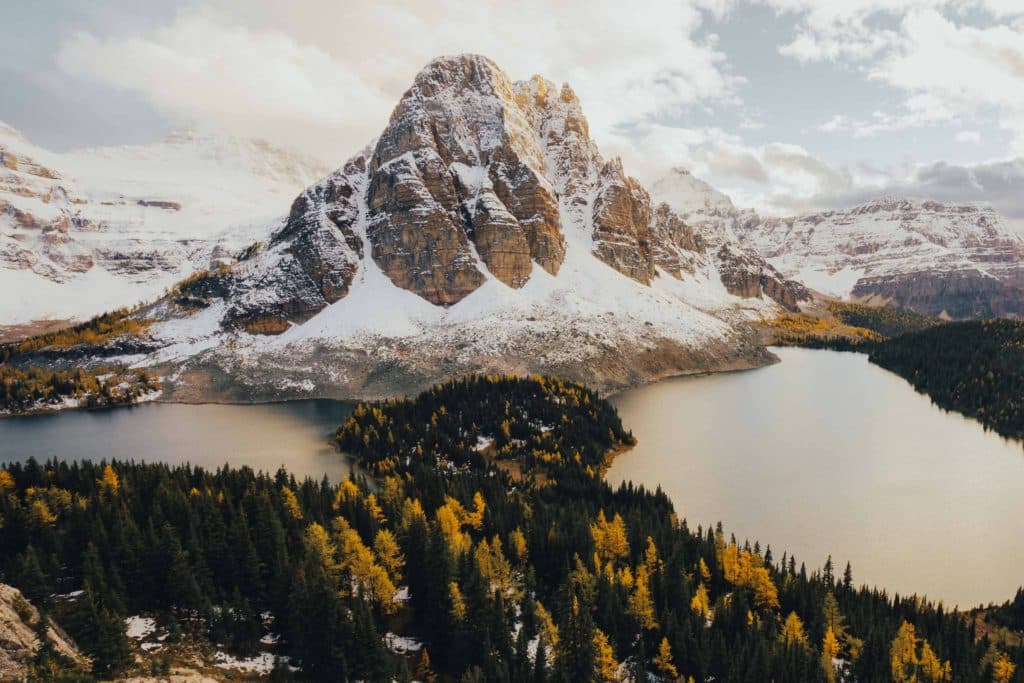



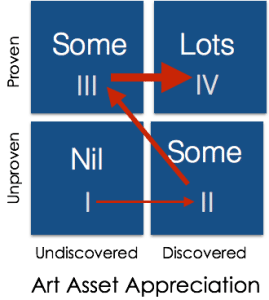 What’s Proven: an artist that exhibitions in multiple countries, and has been exhibited in top galleries or museums
What’s Proven: an artist that exhibitions in multiple countries, and has been exhibited in top galleries or museums
